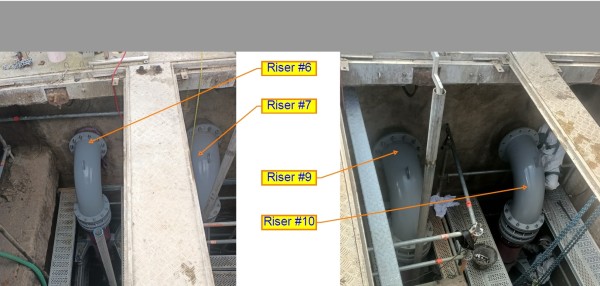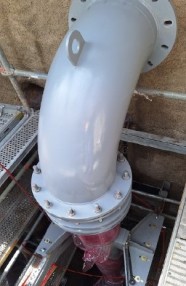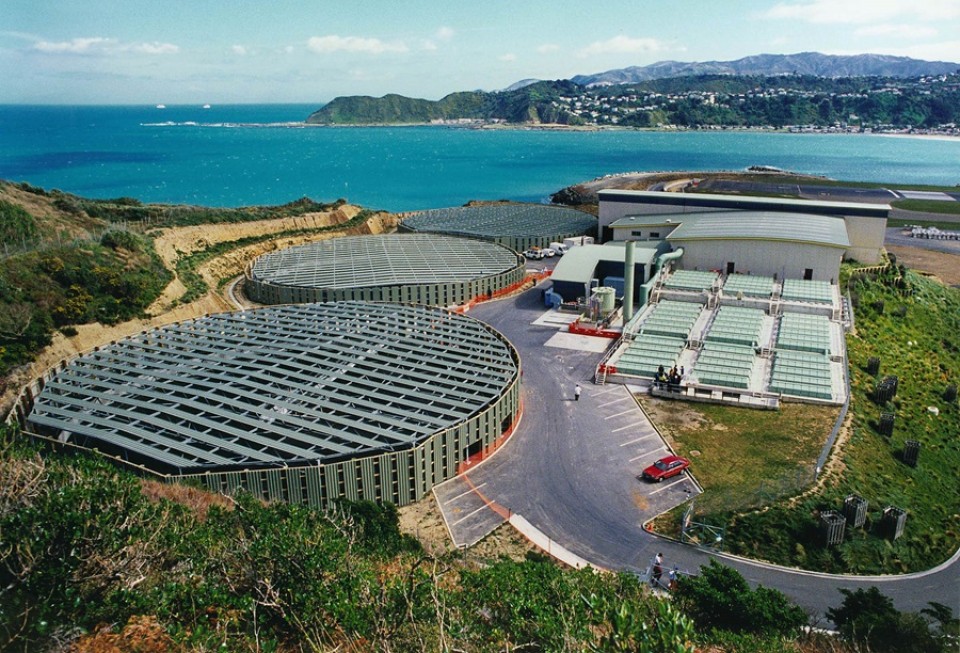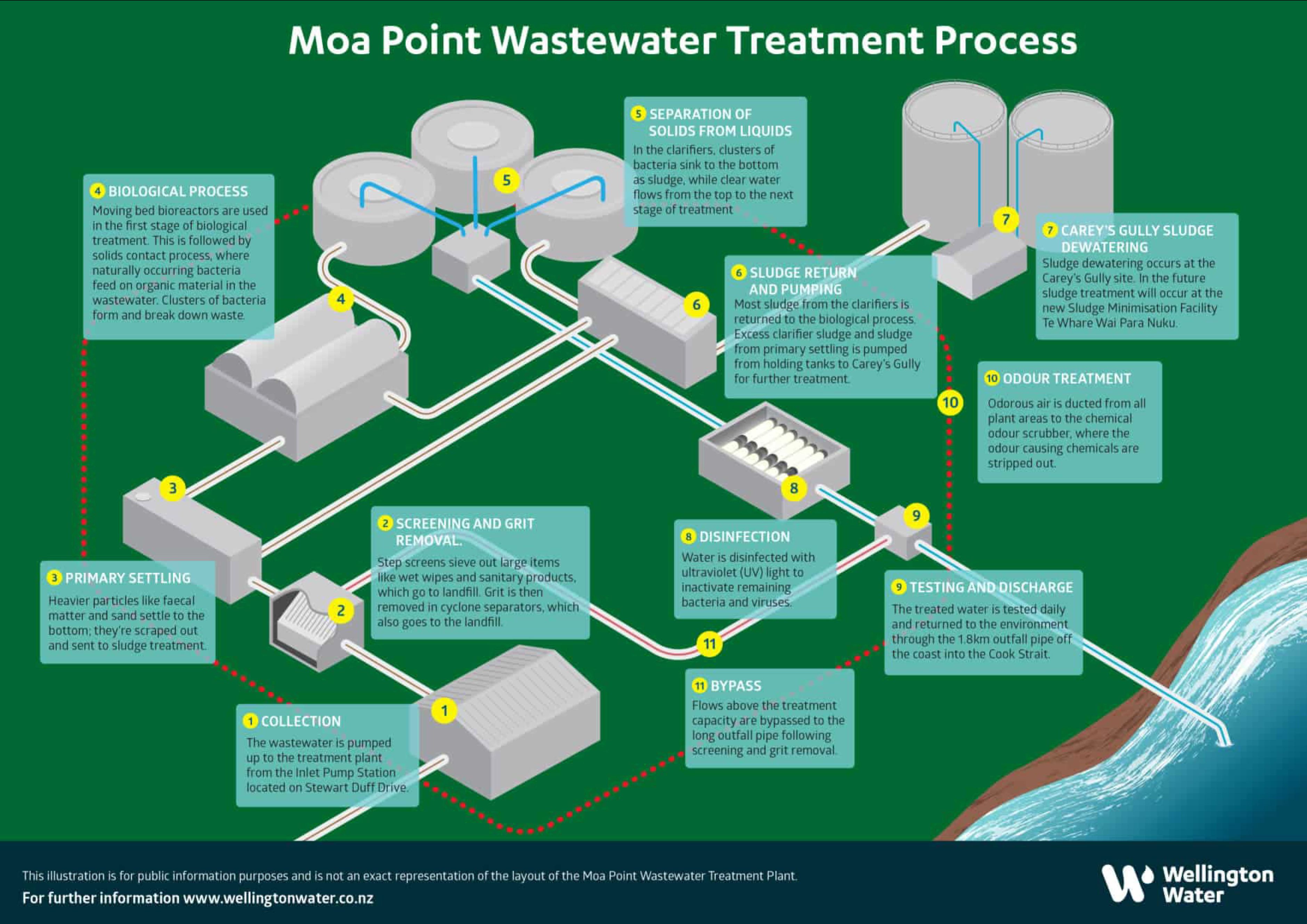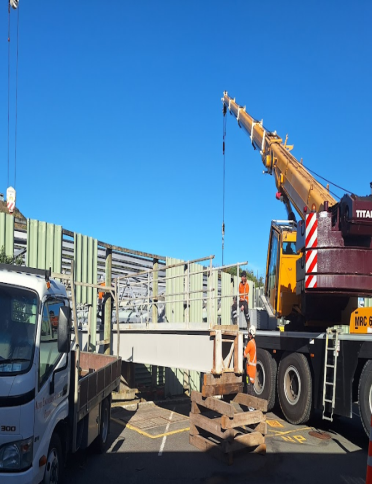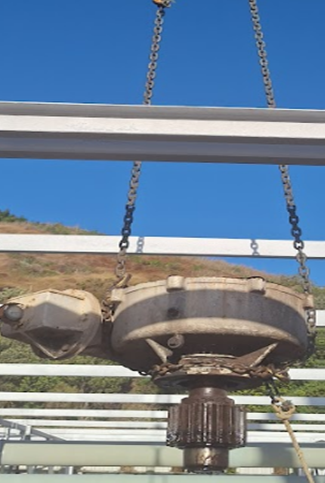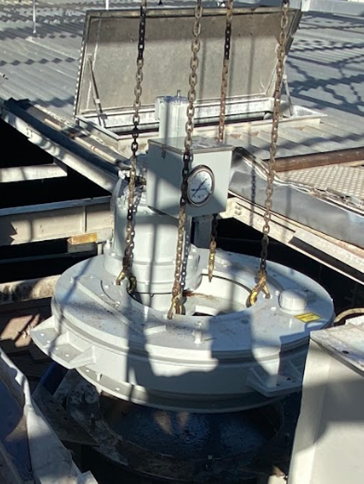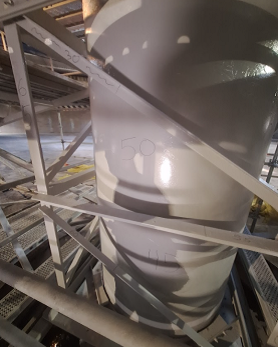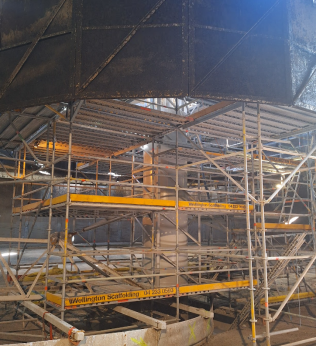Moa Point Wastewater Treatment Plant Refurbishment Projects
We're refurbishing the Moa Point Wastewater Treatment Plant on behalf of Wellington City Council to improve the performance and efficiency of the plant and reduce the risk of discharges. Click the background tab to find out more.
If you have any questions about this work, please contact:
Wellington Water, 04 912 4400
Latest Updates
This is an information session for all the community to particpate in.
The current UV system is nearing the end of its serviceable life and needs to be replaced to ensure the plant continues to operate safely and effectively.
On Thursday, October 16, during dry weather, there was a short discharge released via the long outfall pipe, located 1.8km offshore.
UV Replacement Upgrade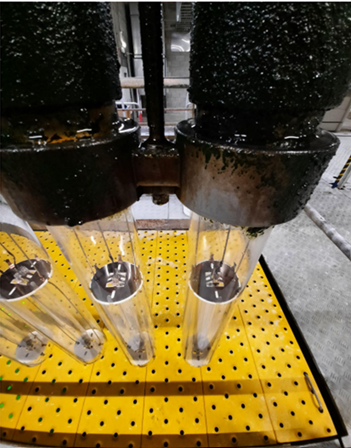
From October 1, we’re continuing the programme of upgrades with replacement of the plant’s ultraviolet (UV) disinfection system.
Why are we doing this?
The current UV system is nearing the end of its serviceable life and needs to be replaced to ensure the plant continues to operate safely and effectively.
What does this involve?
During the upgrade, the plant’s treatment capacity will be temporarily reduced while each of the two UV channels is taken offline one at a time. On rainy days, wastewater flows that exceed the plant’s reduced capacity will not undergo biological treatment or UV disinfection.
What are the benefits?
The replacement of the current UV system will improve the plant’s performance and resilience, minimising the risk of system outages. It will have long-term benefits for water quality along Wellington’s south coast and help reduce the frequency of discharges from the plant. The works will be completed by May/June 2026.
Why now?
To reduce community and environmental impacts, we’ve scheduled the works during the drier months to reduce the frequency of discharges into the sea. Public health advice is to avoid swimming for two days after rain, as stormwater and partially treated wastewater may increase bacteria levels in the ocean. This advice is especially important throughout the duration of works.
Electrical, Instrumentation and Controls (EIC) renewals
A priority at the Moa Point Wastewater Treatment Plant is to renew and upgrade the outdated and unsupported SCADA (Supervisory Control and Data Acquisition), PLC (Programmable Logic Controller) and MCC (Motor Control Centre). These components are essentially the brain and nervous system of the plant and are key to ensuring plant compliance with current standards.
A carefully planned programme is underway to upgrade these components with completion expected by 2027.
Inlet Pump Station and Clarifier refurbishment
The replacement of 10 riser pipes and four pumps at the Inlet Pump Station was completed ahead of schedule. These works have restored the plant’s pumping capacity to at least 4,000 litres per second. This will increase the resilience of the pump station and improve environmental and health outcomes by reducing the risk and frequency of future discharges.
Refurbishment of all the plant's three clarifiers was completed in June 2025. Key mechanical components on each clarifier were replaced including the main drive bearings. These activities are vital to improve the operation of the plant, so it runs at optimal level.
Aeration system renewal design
Design work is underway for the renewal of the aeration system. Cost and timing for the upgrade will not be determined until the concept design is complete.
Why is this work needed?
The Moa Point Wastewater Treatment Plant cleans and disinfects wastewater from about 180,000 people every day. Find out more about Moa Point’s operations here
Much of the plant’s equipment and parts are nearing the end of their service life, which means its more prone to service interruptions and needs more maintenance.
A multi-million-dollar programme of work is planned over the next seven years to renew and upgrade equipment at the plant to improve its operation, subject to funding being confirmed. This programme includes improving the reliability and effectiveness of the treatment, increasing capacity to handle population growth, and improving safety.
Sludge Management Facility
Wellington City Council is managing a project to build a new Sludge Management Facility. Find out more on the Wellington City Council website here
|
||
|
Getting to know Moa Point WWTP The Moa Point Wastewater Treatment Plant is managed by Wellington Water on behalf of Wellington City Council. The plant operator is Veolia. This key network asset has serviced the majority of Wellington city since 1998. Prior to that, untreated wastewater was discharged into the inter-tidal zone at Moa Point. The plant has capacity to discharge up to 260,000 cubic metres of wastewater per day. Each day the Plant cleans and disinfects wastewater from about 180,000 people. It treats an average 850 litres of water (or about three standard bathtubs) every second and up to 3,000 litres a second during heavy rainfall. Much of the Plant’s equipment and parts are nearing the end of their service life, which means its prone to service interruptions and more unscheduled maintenance. A multi-million-dollar programme of work is planned over the next seven years to renew and upgrade equipment at the Plant to improve its operation, subject to funding.
|
How the plant works:
-
Wastewater - travels through a series of screens, tanks, bioreactors, clarifiers and ultraviolet treatments before being discharged as liquid into Cook Strait.
-
Non-organic - large, non-organic materials such as toilet paper and wet wipes are first removed using screens. This rubbish is washed and compressed and sent to the Southern Landfill for disposal.
-
Solid sludge - as wastewater travels through sedimentation tanks, the majority of solids are removed. This sludge is taken to the Southern Landfill Sludge Treatment Plant where it is de-watered (water removed from solids).
-
Effluent - a series of tanks and bioreactors use a combination of sedimentation and bacteria to decompose almost 70% of the carbon, organic and inorganic liquids. Remaining liquid effluent is exposed to ultraviolet light to destroy any harmful bacteria. The treated liquid is finally discharged, through a long outfall, 1.8km into Cook Strait.
|
||
|
All Updates
It’s been a busy year at the Plant, with refurbishment of key assets underway. This meeting is an opportunity to hear about the work programme, learn how the Plant is performing, and ask any questions you may have.
Representatives from Wellington Water and Veolia (the plant operator) will be there to share updates and answer your questions.
If you’re unable to attend or would like to submit questions in advance, please email community@wellingtonwater.co.nz
The upgrade which started on October 3 is due to be completed by June 26.
Once completed it will improve the Plant's overall performance,
-
the resilience and UV disinfection of treated wastewater
-
reduce the risk of equipment failure
-
Supports better water quality outcomes for the South Coast
Why did this discharge happen in dry weather?
As part of an essential upgrade to the plant’s ultraviolet (UV) disinfection system, the facility is currently operating at approximately 50 % reduced capacity. This work is necessary to replace aging equipment and ensure the long-term reliability of the treatment process.
While the plant is designed to fully treat normal dry weather flows, there are likely to be instances particularly during peak flow periods when the volume of wastewater temporarily exceeds the reduced treatment capacity.
This means additional pumps are automatically activated to transfer increased flow from the pumping station up to the plant. During this mechanical transition, a short bypass discharge occurs, where partially treated wastewater (screened and grit-removed, but not biologically treated or UV disinfected) is released via the long outfall pipe, located 1.8km offshore.
This safeguard is built into the plant’s design to prevent flooding and avoid any discharge via the short outfall, which would pose a greater environmental and public health risk.
We understand that a discharge from the plant during dry weather may be concerning. Please be assured:
- These events are generally brief, in some cases only lasting 60–90 seconds.
- The discharge is rapidly diluted in the ocean and occurs well away from popular recreational areas.
- We sample water after discharges and notify stakeholders and the public once results are available.
- An environmental assessment has indicated that these discharges have a low overall environmental impact.
As the upgrade continues through to mid-2026, these short discharges may occur more frequently during peak times, even in dry weather. We’ve scheduled the work during the drier months to reduce the risk of unconsented discharges and are committed to keeping the community informed.
 Wellington Water, on behalf of Wellington City Council, is continuing its programme of upgrades at the Moa Point Wastewater Treatment Plant with the replacement of the plant’s ultraviolet (UV) disinfection system, starting 1 October.
Wellington Water, on behalf of Wellington City Council, is continuing its programme of upgrades at the Moa Point Wastewater Treatment Plant with the replacement of the plant’s ultraviolet (UV) disinfection system, starting 1 October.
These works follow the recent refurbishment of the plant’s three clarifiers and replacement of pipes and pumps at the plant’s Inlet Pump Station.
The UV system, which is the final stage of the treatment process, is nearing the end of its serviceable life. Its primary function is to disinfect wastewater before it is safely discharged into the ocean between Te Raekaihau Point Reef and Hue te Taka.
During the upgrade, the plant’s treatment capacity will be reduced while each of the two UV disinfection channels is taken offline, one at a time. On rainy days, when wastewater volumes are higher than usual, all of the flow goes through initial screening and grit removal. However, some flow may bypass the full biological treatment and UV disinfection process.
This partially treated wastewater will then be combined with fully treated wastewater and be discharged via the long outfall pipe 1.8km offshore. Discharges in this location, will be heavily diluted due to significant tidal flows.
FAQs
What is being upgraded at Moa Point Wastewater Treatment Plant?
We’re replacing the ultraviolet (UV) disinfection system, which is the final stage of the wastewater treatment process. The current system is nearing the end of its serviceable life and needs to be replaced to ensure the plant continues to operate safely and effectively.
Why is this upgrade necessary?
The function of the UV system is to disinfect treated wastewater before it is discharged into the ocean. The current system is 27 years old and is no longer supported by the manufacturer. We need to replace it to avoid the risk of a system failure.
When is the work happening?
Construction begins in October 2025 and is expected to continue through to May-June 2026. The work has been scheduled during the drier months to reduce the frequency of discharges during rainfall.
Will this affect the plant’s ability to treat wastewater?
The plant’s treatment capacity will be temporarily reduced while each of the two UV channels are taken offline one at a time. In the event of rainfall, wastewater flows that exceed the plant’s reduced capacity will not undergo biological treatment or UV disinfection. When it doesn’t rain, the plant’s treatment process is expected to operate normally with wastewater fully treated.
What happens to wastewater that isn’t fully treated at Moa Point?
When wastewater exceeds the plant’s reduced capacity, the flows are screened and go through grit removal but won’t be disinfected. This ‘partially treated’ wastewater will be combined with fully treated wastewater and discharged via the long outfall pipe, located 1.8km offshore.
Is this allowed under the plant’s resource consent?
A bypass where wastewater is diverted around the biological (secondary) treatment process is permitted under the plant’s existing consent. However, bypasses during the UV upgrade are not covered as the plant will not be operating at full normal capacity. The regulator, Greater Wellington Regional Council, has been notified and will monitor the situation accordingly.
Is it safe to swim or surf during the upgrade?
Public health advice is to avoid swimming for two days after rain, as stormwater and partially treated wastewater may increase bacteria levels in the ocean. This advice is especially important throughout the works. Water quality monitoring will be undertaken after rainfall and subsequent discharges.
How will I know if it’s safe to swim?
We’ll post updates and warnings on social media and there will be signage at key shoreline locations. You can also check real-time water quality information at LAWA https://www.lawa.org.nz/explore-data/swimming
What are the long-term benefits of this upgrade?
Once complete, the new UV system will:
• Improve the plant’s performance and resilience
• Improve the UV disinfection of treated wastewater
• Reduce the risk of equipment failure
• Support better water quality outcomes for the South Coast
How is Wellington Water working with the community?
We’re engaging with mana whenua, local residents, businesses, and recreational water users to keep them informed and minimise disruption. Signage, newsletters, alerts, and face-to-face engagement are all part of our communications approach.
The refurbishment of the third and final clarifier reached a key milestone last week.
The team successfully installed the replacement main drive bearing, a key technical component of the clarifier. All refurbishment of the Plant's clarifiers is complete.
The final phase of the Inlet Pump Station renewal project, to replace the last four of 10 riser pipes, has been completed ahead of schedule.
This means that all 10 riser pipes, and pumps, are now in operation across both wet wells restoring the plant’s design pumping capacity of at least 4,000 L/s and addresses the risk of untreated discharges to the environment during heavy rainfall.
As part of this work, four of the pumps have been replaced with new pumps (images below) with a further four pumps scheduled for replacement in the second half of the year.
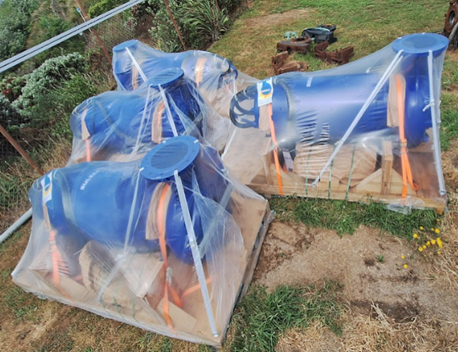
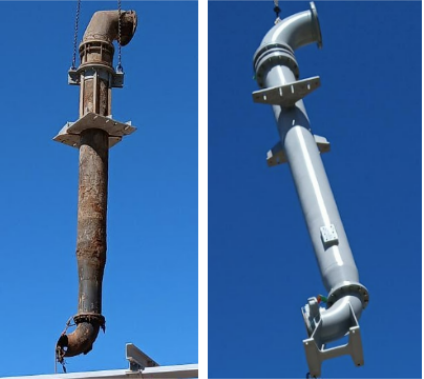
Four new pumps prior to installation Old riser replaced by a new riser
Thank you for your patience and understanding whilst this work has been carried out.
Work is currently underway with refurbishment of the third and final clarifier at the Moa Point Wastewater Treatment Plant. The clarifiers are large tanks used to separate sludge from treated wastewater. Refurbishment of two of the three clarifiers has been completed and the same process is being applied with the third.
Draining, cleaning and disinfection of Clarifier #1 in preparation for the refurbishment was completed prior to the Christmas break. This enabled the scaffolding to be erected soon after so a detailed inspection could take place this week.
The next stage of work will be the remedial repairs identified in the inspection. This should start next week and is expected to take a couple of months before the team move on to refurbishing and replacing key mechanical components including the main drive bearing.
Following completion of this work the plant’s capacity will be restored, with all three clarifiers on track to return to service by end of June 2025.
These activities are vital to improve the operation of the plant, so it runs at optimal level. We thank you for your patience and understanding while we carried out this important maintenance work.’’
We will keep you informed as the project progresses.
The final phase of the Inlet Pump Station (IPS) renewal project to replace the last four of 10 riser pipers that began in October is progressing well.
The work has been split into two stages either side of Christmas with the first stage being three riser pipes replaced in the same wet well. Below are some images showing them in place.
The IPS pumping capacity is now around 3,800 L/s versus 3,100 L/s after completion of phase 2 of the project. This reduces the risk of untreated discharge during heavy rainfall over the holiday period.
Works will recommence in mid-January to replace the final riser which will require us to temporarily take the adjacent wet well offline and reducing the IPS capacity again during this period. The project is on track to be completed by end of March 2025.
We will keep you informed as the project progresses.
|
Riser pipe 1 installed |
Riser pipes 4 & 5 installed |
Heavily corroded old riser being lifted out |
Wellington Water, on behalf of Wellington City Council, is continuing its programme of maintenance and refurbishment of the clarifier tanks at the Council’s Moa Point Wastewater Treatment Plant. This is part of efforts to enhance the plant’s performance and safeguard the environment.
Media release - Moa Point Wastewater Treatment Plant refurbishment work underway
We are about to get underway with some planned maintenance on one of our three Clarifiers at the Moa Point Wastewater Treatment Plant (the plant). This work is scheduled to commence on 21 October 2024 and expected to be completed before the end of November 2024.
The maintenance activity is being undertaken in parallel with the works currently underway on the Inlet Pump Station (IPS). These activities will temporarily reduce the plant’s capacity, so we have scheduled this work to be done now, when there’s less water in the network. This minimises the risk of compromising the ongoing operation of the plant.
We are confident the plant will be able to treat dry weather flow levels with the remaining two clarifiers. However, the reduction in the IPS pumping capacity during the works does increase the risk of discharges of untreated wastewater at the short outfall during periods of high rainfall. As the plant can still fully treat the flow delivered by the IPS during the maintenance period with operation of two clarifiers, we have assessed the overall risk as low.
Emptying and cleaning the clarifier will involve removing some sludge, which may cause a very low amount of odour. We are aware that odour from the plant is a concern for residents, and we anticipate odour may be present for short periods of time while we undertake this work. We will do our best to complete this work as soon as possible to minimise impact on the community.
Planned maintenance activities are vital to improve operation of the plant. This work is part of an ongoing programme of work to improve performance of the plant, ensuring it operates at an optimal level.
We thank you for your patience and understanding while we carry out this important maintenance work.
Further work to refurbish the inlet pump station at the Moa Point Wastewater Treatment Plant will commence on 14 October. Weather permitting, we expect to be completed by the end of February 2025.
This is the third and final phase of a programme that will increase the resilience of the pump station and improve environmental and health outcomes by reducing the risk and frequency of discharges through the short outfall into the environment.
This final phase involves replacing the last four of 10 riser pipes at the pump station to help address the immediate risk of discharges to the environment. When completed, the pump capacity of the plant will be restored.
Some work may be undertaken at night to take advantage of lower volumes of wastewater during this time. We will notify residents of this in advance and efforts will be made to minimise noise impacts.
We are aware that odour from the pump station is a concern for residents. We anticipate odour may be present for short periods of time while we undertake this work. However, we plan to mitigate odour issues by having negative air pressure to draw in air when the pump station doors are open. The work site will also be screened off.
This project is not associated with current works underway at the treatment plant constructing the Sludge Minimisation Facility (SMF). However, it will coincide with the work the SMF project is currently doing on the inlet pump station to incorporate it into the facility.
Following refurbishment and bearing replacement work, Clarifier #2 at Moa Point WWTP is now fully operational and the plant has returned to its full treatment capacity.
Contractors have made excellent progress in June, finishing off the protective painting, replacing the main drive bearing and also refurbishing the other larger mechanical components within the structure.
|
Image 1. Crane used for removal and installation |
Image 2. Old drive lifted out |
Image 3. New drive lifted into position |
The final minor mechanical works are now taking place to ensure the clarifier is ready to run smoothly when it is brought back online. This is expected to be within the next couple of weeks.
We will advise you when the project has been completed.
The remedial works recommended in April’s specialist assessment are currently in progress with contractors replacing bolts and brackets that have been damaged from corrosion.
Another crucial part of these remedial works is to recoat areas like structural beams, cross bracing and other areas with specialist protective paint to help slow down corrosion in the future. This does take some time unfortunately due to the sheer size of the structure and the amount of areas identified for recoating. See Figures 1 & 2 below.
|
Figure 1: Centre column recoated |
Figure 2: Scaffolding around drive cage for recoating |
We expect this work to be completed within the next 2-3 weeks before the team can move on and carry out the main upgrade - replacing the bearing and other major mechanical components. The project is currently forecasted to be completed in early July to accommodate the recommended additional works from the specialist assessment.
We will keep you informed as the project progresses.
Works for the latest phase of the Inlet Pump Station project have been completed on schedule. This brings the total number of replaced riser pipes to six out of 10, significantly improving the reliability and resilience against short outfall discharges to the Coastal Marine environment.
Please note that further work is planned to complete the refurbishment and get the pump station back to full capacity and reliability.
We are planning to continue this work next summer when the flows to the treatment plant are low. This scheduling is to reduce the likelihood of untreated wastewater discharge during heavy rainfall.
The inspection of the clarifier has been successfully completed with the specialist engineers identifying some areas needed for additional remedial works.
Examples identified were corrosion around various bolts and brackets (Image 1) that help support the internal structure. These will be replaced along with other key steel structural supports that may require cleaning/recoating to protect against future corrosion (Images 2 & 3).
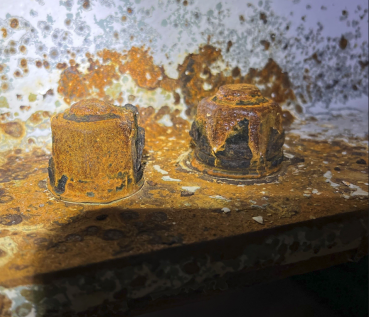
|
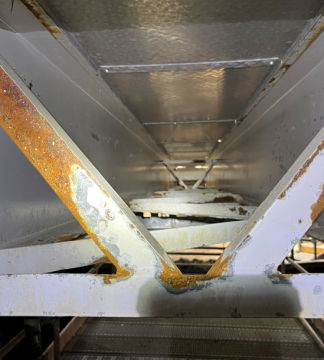
|
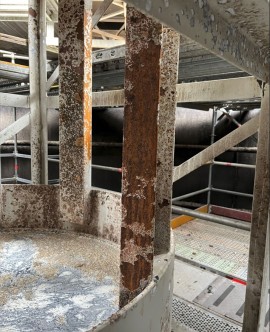
|
| Image 1 - Corroded bolts | Image 2 - Minor corrosion to support beams | Image 3 - Steel structure to be recoated |
These physical works are now underway and will precede the main upgrade to the key mechanical components of the clarifier in the coming weeks.
We will keep you informed as the project progresses.
Works are underway to clean the wet well at the Moa Point Inlet Pumping Station ahead of the 2 riser pipes replacement works in April. This may increase the level of odour around the pumping station whilst this cleaning is carried out.
The physical works to replace the riser pipes will begin on 3rd April. Once completed, this will bring the total to six out of the 10 riser pipes replaced, significantly improving reliability and resilience against short outfall discharges to the Coastal Marine environment.
The works involves taking one of the two wet wells offline throughout the duration of the project. We are confident that one wet well will be able to handle the dry weather flow going into the inlet pump station. However, the temporary reduction in the pump station’s discharge capacity does increase the risk of untreated wastewater overflows to the short outfall during a period of heavy rainfall. This project is being undertaken in parallel with the Moa Point Wastewater Treatment Plant clarifier refurbishment project to reduce the timeframe of the plant operating at reduced capacity. The Inlet Pumping Station project is expected to be completed in May 2024 with the clarifier works finishing in June 2024.
Should there be an overflow at any time during the Inlet Pumping Station project work, we will immediately notify the community as per the standard protocol.
In preparation for the second phase of the inlet pump station work that's coming up, we've provided residents with more information via the Resident letter - Moa Point Inlet Pump Station Phase 2 which was posted last week.
This work will commence at the end of March 2024 as part of a wider programme to refurbish the station. We'll keep you informed as the project progresses.
Contractors have completed the cleaning of the inside of the clarifier.
All the components are now ready to be structurally assessed by specialist engineers and these inspections are scheduled for next week, weather permitting.
After the inspections are completed, the team will begin the planned upgrade works to the main mechanical components of the clarifier and also any potential additional remedial works discovered through the inspections.
We will keep you informed as the project progresses.
Good progress has been made by the contractors who have been power washing the inside of the clarifier these past few weeks (see pic below).
This has enabled some extra scaffolding to be erected which will allow the contractors to access the areas that are inherently more difficult to clean.
Once this more detailed cleaning to expose steel and mechanical components is complete, the clarifier will then be ready to be structurally assessed by a specialist engineer. This inspection will hopefully take place around the beginning of March.
We will keep you informed as the project progresses.
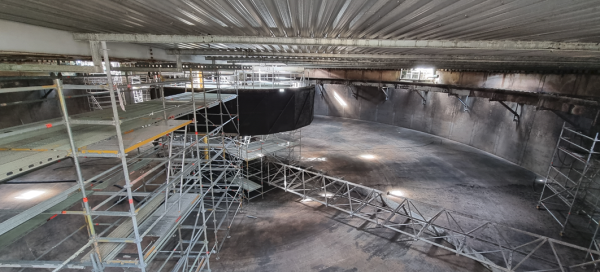
(Inside of Clarifier 2 post initial clean)
The team have drained down the clarifier last week.
This is the first stage of a large project that will see the inside of the clarifier cleaned, refurbished and re-painted before a full replacement of the central mechanical bearing that drives the scrapers around the structure. There is a chance this may cause minimal odour but it will only be for a short period.
This now enables the contractors to safely enter and begin power washing the whole inside of the clarifier. This process will begin this week and is expected to take around 3-4 weeks.
Once the cleaning is complete it allows a structural engineer to accurately assess the condition of the clarifier and identify any potential remedial works needed.
We will keep you informed as the project progresses.
Please be advised that the draining down of the clarifier has been rescheduled to next week, from the 23rd January 2024.
This extra period will be used by the operators to ensure the plant is in optimum condition to have the clarifier taken ‘offline’ ahead of the project.
Thank you for your patience and understanding.
From 15 January 2024 we will be starting work on refurbishing one of the three clarifiers.
This project is being undertaken in parallel with the replacement of the rising main pipes at the inlet pump station to shorten the time that the treatment plant’s capacity is reduced. It involves emptying and cleaning the clarifier and having it assessed internally by structural engineers. The team will then begin the process of installing the new main drive and bearings. Click on the background tab to find out more about the 'clarifier' project.
Emptying and cleaning the clarifier will involve removing some sludge, which may cause a very low amount of odour, but it will only be for a short period. We will provide further updates about the exact timing of this work.
We are delighted to inform that the 4 pumps were successfully reinstalled this week and the wet well was back brought back online from Tuesday - 3 days ahead of schedule!
Veolia have been monitoring the pumps performance closely over the last few days to make sure the desired performance, from both the pipes and pumps, is being achieved.
The next phase of works for Inlet Pumping Station will be to install 2 new riser pipes, just like the 4 installed this month, in the adjacent wet well. These works are expected to begin late March next year.
Last week’s work to fix the wall brackets and anchors was successful and we are pleased to report the riser pipes are now fixed in their positions, ready to be connected to their individual pumps.
The scaffolding within the wet well has been removed and the contractor brought in to install the riser pipes has now demobilized from site.
This week Veolia began the process of reinstalling the 4 pumps and this is expected to be finished by the end of the week.
We will provide another update next week and confirm the status of the project.
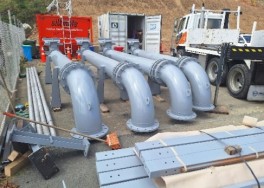 Works are progressing well at the inlet pump station with the 4 riser pipes now in position.
Works are progressing well at the inlet pump station with the 4 riser pipes now in position.
This week will see the installation of the wall brackets and anchors to keep the pipes fixed in their position as well as some minor grouting within the wet well.
Assuming this work goes to plan, we plan on lifting the 4 pumps back into their original positions the following week.
We will provide a further update when this week’s work has been completed.
